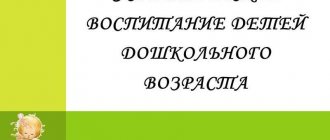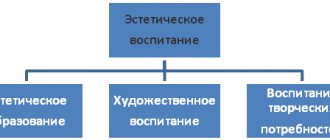Small children experience the world by touch. Application helps to embody the images and objects seen on paper or using other materials. For small children, paper dishes using the appliqué technique will be a good opportunity to learn the names of objects. And adult children hone their skills of believability in crafts.
It can be made from paper, fabric and plasticine. Tableware applique is most often simple and almost all of its types are suitable for preschoolers and kindergarteners. And having supplemented the basic craft with his own elements, the child will take the craft to school.
Glasses in applique
Offer to make your child a refreshing glass of lemonade. Cut out the glass. The lemon circles will be made from circles and triangles of colored paper. Ice cubes are made from soaked thin napkins. Add a straw and the craft is ready.
You can make a summer cocktail using a colored paper coffee cup. Cut it in half lengthwise and stick it on cardboard. Garnish with a citrus slice (umbrella). Decorate the background as desired.
Summary of GCD for application in the middle group “Tableware” “Tea pair”
Summary of GCD for application in the middle group
Topic of the week: “Dishes” “Tea pair”.
Target:
evoke positive emotions in children.
Tasks:
Continue to expand children's understanding of tableware.
Activate vocabulary.
Train children to tear paper finely and develop fine motor skills. Arrange the pieces of paper in a mosaic pattern.
Apply glue dotwise and glue a piece of colored paper.
Preliminary work: Reading a fairy tale by K.I. Chukovsky “Fedorino’s grief”; Clarifying children's knowledge about the classification of tea, kitchen and dining utensils. Material:
demonstration material illustration tea set, tea pair. A cut-out template of a tea pair according to the number of children, glue, a glue brush, oilcloths, rag napkins, colored paper, demonstration templates with step-by-step application.
Progress of the lesson:
Educator:
Guys, listen to the riddles. - You can pour boiling water,
You can make tea
It has a handle and a spout.
You answer the question:
Who is the boss in the kitchen?
Important and pot-bellied...(Teapot). - If you want to drink tea - So get me, Beautiful cutie, All in flowers, with a saucer... (Cup). - It can be deep.
But sometimes it’s small.
However, this is not a river. (Saucer) - To eat soup - it’s big. And for porridge, there is one. A little less tea. What is this? Of course... (Spoon) - Unapproachable in appearance,
Standing with his arms akimbo,
And look inside,
Treat inside! (Sugar bowl).
Educator:
Well done, you solved all the riddles. How can we call all these objects in one word?
Answers.
Educator:
List the items that we need in order to drink tea?
Answers.
Educator:
We need this utensils to drink tea, what can we call this utensils in one word?
Answers.
Educator:
You and I read Fedorino's grief, from whom did the dishes run away?
Answers.
Educator:
Why did the dishes run away? Please list which items of dishes escaped from Fedora?
Answers.
Educator:
Guys, what can you make dishes from?
Answers.
Educator:
What kind of dishes can you and I make?
Answers.
Educator:
Tell me, is the design on the dishes the same or different? There is teaware on the table in front of you; come and look at it carefully.
Children look at the dishes and compare the pictures on the dishes.
Physical education minute:
Here is a large glass teapot, very important, like a boss. Here are the porcelain cups, very large, poor things. Here are the porcelain saucers, just knock and they will break. Here are the silver spoons, the head on a thin stem. Here is a plastic tray, He brought us the dishes.
Educator:
Today I want to invite you to make an applique, decorate cups and saucers for tea drinking. We will decorate with colored paper, tear the paper into small pieces and glue it on.
Take your seats at the tables and get to work.
The children work, and at the end of the work we review and evaluate everything.
Educator:
I want to play you a game: “Let’s set the table for tea.”
Children start playing and act out stories.
Cups and teapots
Using the cutout appliqué technique, create dishes for children's tea parties. If the product is made of white sheet, then it is decorated with paints or felt-tip pens, and scrapbooking paper will immediately make a beautiful cup.
Cut out the stencil and fold it in half. The dotted lines are the fold locations. Glue it together and the cup is ready.
They also make tea sets.
The composition of buttons looks no less interesting. It is important to choose a color scheme so that the work is not too colorful.
For the next creation you need an openwork napkin (it can be cut out), colored paper, cardboard, paints, scissors and glue.
We glue an openwork napkin onto the cardboard. A cup is cut out on top. Decorate randomly. Draw or cut out white steam. We complement the tea party with candy. You can create a cup from the cover of a magazine or newspaper, or special gift packaging.
For your attention – a teapot made of fabric.
Simply cut out the thin fabric and glue it onto the cardboard. The centers of flowers can be buttons or beads.
Applique tableware - master class
Let's make an application on the theme “Dishes”.
Here, of course, a variety of approaches and goals are possible. I plan to work not with kids, but with grades 1-2. The people are already adults, the tasks will be difficult.
Let's start with painting one teapot - here is the coloring:
The task is to come up with a beautiful pattern. And something typical for dishes - flowers, berries or a geometric pattern. This explanation is definitely necessary, since students, having received the task of painting dishes, begin to look for inspiration in the environment - and this, as you understand, is tables on the walls and textbooks on desks. This is modern life. So try to keep your children from painting letters, numbers and graphs.
But now - the teapot is painted and you need to cut it along the contour. Here we repeat the methods of cutting a hole in paper and train our intelligence - the spout, although it is separated in the picture by a line from the body of the kettle, cannot be cut off, but what about the lid? The lid is removable! But there is no need to cut it off either.
The next task is a cup. It needs to be painted in the same style as the teapot. This is one service.
The goal is to copy the drawing with a change in scale. You can make a border around the edge of the saucer. Drawing tea in a cup is also not an easy task.
Cutting out a cup is also a tricky business - there is a hole in the handle and a saucer - some thoughtlessly cut off this saucer. But we act consciously and measure and think seven times before cutting.
I invite students to draw the sugar bowl themselves. The shape is approximately like that of a teapot, only without a handle and spout. But don't think it's easy - it's symmetrical! So you will have to work hard, measuring equal distances to the sides of the sugar bowl on both sides of the axis. But here it is ready and painted in the same style as the rest of the dishes.
Now it’s time to draw up a still life - we’ve reached the Utensils appliqué stated in the title of the article.
We mark the edge of the table and arrange the dishes. Here, again, it is necessary to immediately clarify that the dishes do NOT stand on the edge, but are freely distributed - closer and further from the viewer - across the area of the tabletop.
My composition turned out to be beautiful, but... but here’s the problem - the cup’s handle is turned towards the teapot. It's not a big deal, but it's illogical.
Here - the applique of the dishes can be said to be completed. But the picture looks a little sad. Okay, let’s start developing the imagination: add more dishes and food to the table according to your understanding.
I drew, cut and glued a spoon, a bowl of fruit and another cup of tea. The table immediately became richer. A! The tablecloth needs to be laid. The goal is to evenly distribute the pattern across the surface of the table.
Probably, it would be possible to extract even more benefits from the topic “Applique Crockery” for the development of children’s hands and eyes, but - the bell is already ringing! And the students were tired - after all, they worked so hard setting the table.
Tags: paper applique for children, applique with finishing touches, crafts, dishes
Complex panel of coffee beans
And a panel of coffee beans in the shape of a cup will definitely amaze everyone. This is a complex craft, so children will need adult help. Prepare:
- Thick cardboard 2 mm (pressed)
- Superglue, PVA
- Plastic bottle 1.5 l
- Masking tape and regular tape
- Ground coffee
- Coffee beans
Cut this shape out of the bottle.
Cut off the neck and get half a cup.
Glue it to the plastic “bottom” and cover it with masking tape.
Apply PVA glue and sprinkle with ground coffee.
Cut out a saucer from thick cardboard and bend it slightly.
We also cover it with glue and sprinkle it with ground coffee.
Then we glue the grains onto superglue or hot glue.
Let's start assembling the panel. Again, take thick cardboard or a thin sheet of drywall. Come up with a frame. Cover the background with crumpled paper (suitable for baking). Decorate the edges with broken cinnamon sticks, siding or coffee beans. Glue the cup and saucer. Glue a handle from the grains.
They are also made from natural materials. You can make a panel of tea leaves using a herbarium of currants, cherries, and dried berries.
Paper applications are not always suitable for children's games. They are not durable and get dirty quickly. But they will become a worthy interior decoration or a craft for school. With the help of dishes, kids learn the names of dishes and their purpose. A master class with coffee beans is suitable for children in grades 4-5.
Paper tableware using applique technique
Small children experience the world by touch.
Application helps to embody the images and objects seen on paper or using other materials. For small children, paper dishes using the appliqué technique will be a good opportunity to learn the names of objects. And adult children hone their skills of believability in crafts. It can be made from paper, fabric and plasticine. Tableware applique is most often simple and almost all of its types are suitable for preschoolers and kindergarteners. And having supplemented the basic craft with his own elements, the child will take the craft to school.
DIY cup and saucer applique
So, the first thing you will need to do is draw a very simple drawing - a cup and saucer. If you follow the photo instructions exactly and carefully, you will definitely succeed.
Then the finished sketch must be decorated and decorated with all kinds of patterns. Let the cup be decorated with flowers, hearts, unusual patterns, or perhaps inscriptions.
You also need to decorate the background for your craft.
Now, in order to convey to the viewer of your craft that there is really warm and aromatic tea in the cup, you need to create the smoke that comes from it. Apply glue to the area above the mug and glue cotton wool flakes.
Now cut out the silhouette of a tea bag from a small piece of cardboard and attach a small flagellum to it. We glue this entire composition to the drawn cup.






